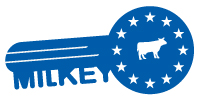Type of indicator
Quantitative
Relative dimension and aggregated criteria
Environmental sustainability: Environmental quality: Soil quality
Description
Erosion risk refers to the potential average of eroded soil for one hectare of the assessed farm over a year of production. Erosion is taken into account in the LCA due to its influence on pollutants washing. Moreover, erosion affects the productivity of crops due to soil damage. It is affected by the precipitation, type of soil, and topography.
Indicator calculation
(∑i^n〖(R * K * L * S * C * P * f) / CSi〗)/n
Where:
𝑅 = Run-off factor retrieved from the European Soil Data Centre (ESDAC) (Panagos et al., 2015)
𝐾 = Soil factor retrieved from the ESDAC (Panagos et al., 2015)
𝐿𝑆= Topography factor: 0.377 (Koch and Salou, 2016)
𝐶 = Cover management factor
𝑃𝑖 = Cultural practice of crop i
𝑓 = Acre factor: 2.47 (Koch and Salou, 2016)
𝐶𝑆𝑖 = Surface area of crop i in ha
𝑛 = Number of farm crops
Unit
t of eroded soil/ha
Indicator interpretation
Higher values indicate larger negative impacts on the environment.
Scale definition
| Reference values
(t of eroded soil/ha/year) |
Scales | Dexi interpretation | References | |
| 0.2 | < 0.5 | Very low | + | Adapted from (Gassman et al., 2006; Vadas and
Powell, 2013) Scale: Expert opinion |
| 1.5 | [0.5; 1.5] | Low | ||
| 2.2 | [1.5; 2.5] | Medium | ||
| 5 | [2.5; 4.5] | High | ||
| >4.5 | Very high | – | ||
References
Koch, P., Salou, T., 2016. AGRIBALYSE®: Rapport Méthodologique – Version 1.3. Ed ADEME, Angers, France, p. 343p.
Renard, K., Foster, G., Weesies, G., Porter, J., 1991. RUSLE: Revised universal soil loss equation. Journal of Soil and Water Conservation 46.
